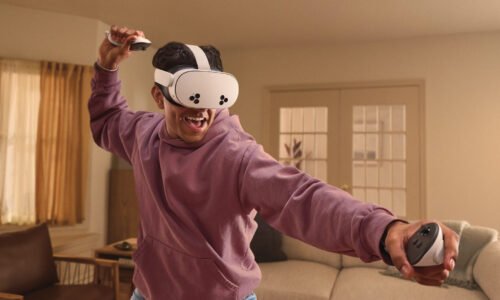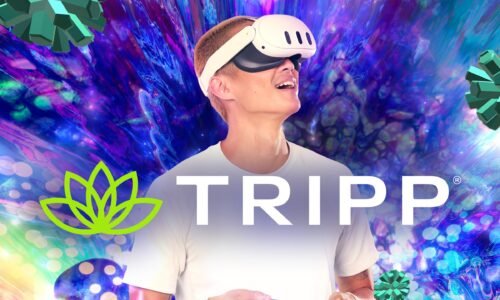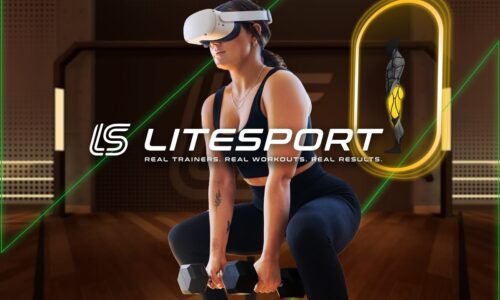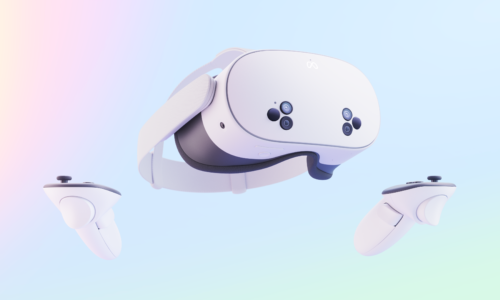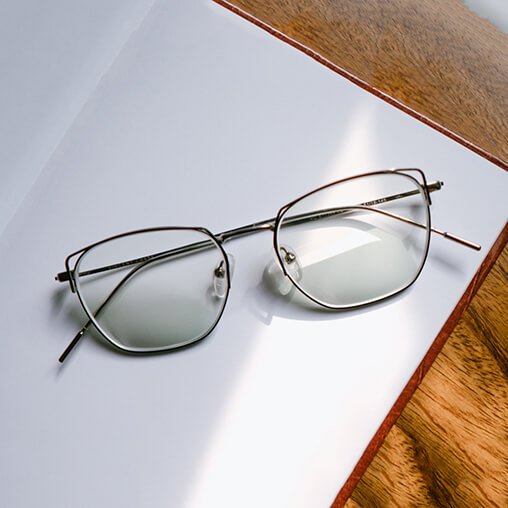
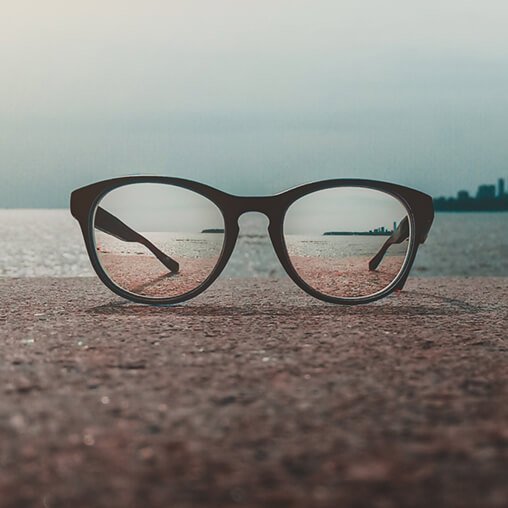
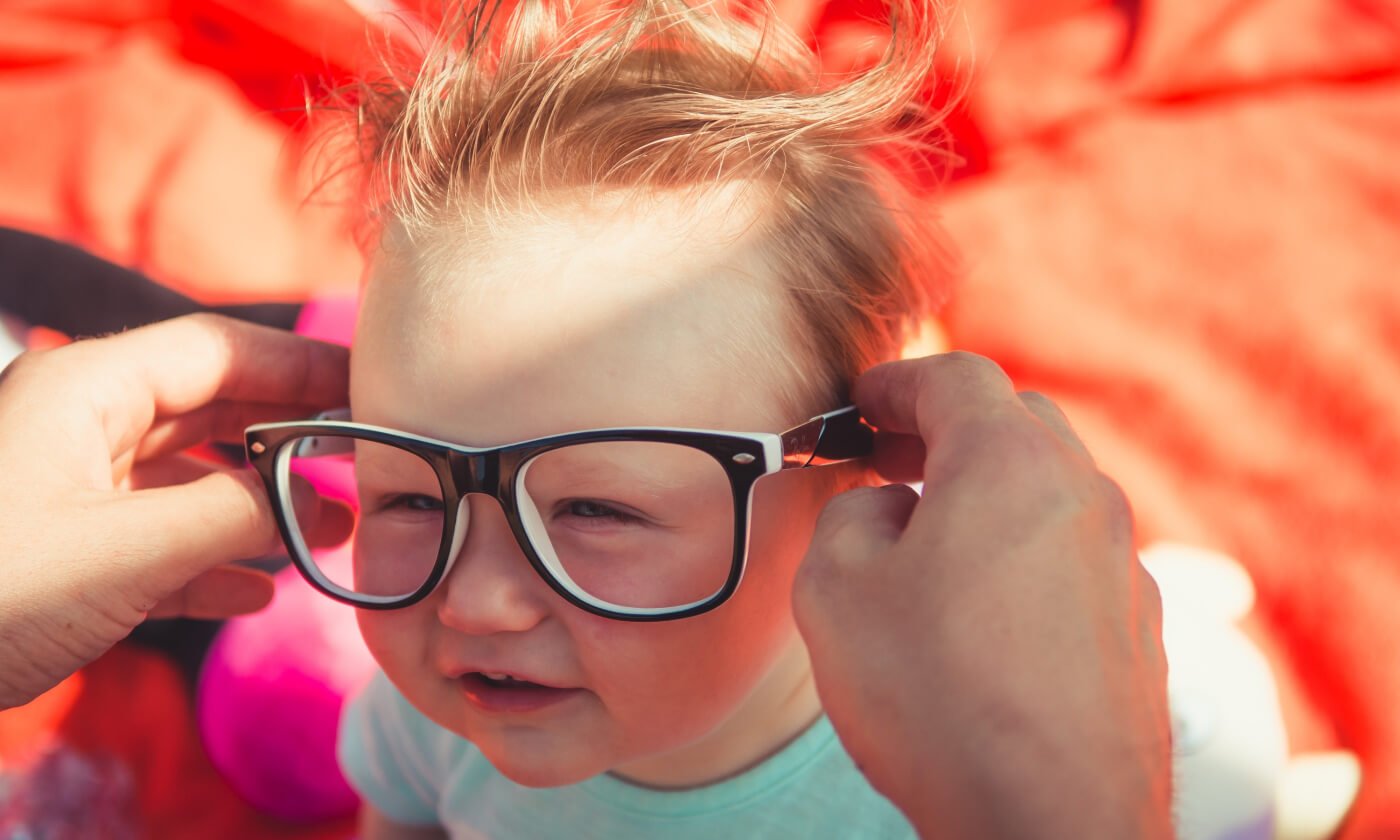
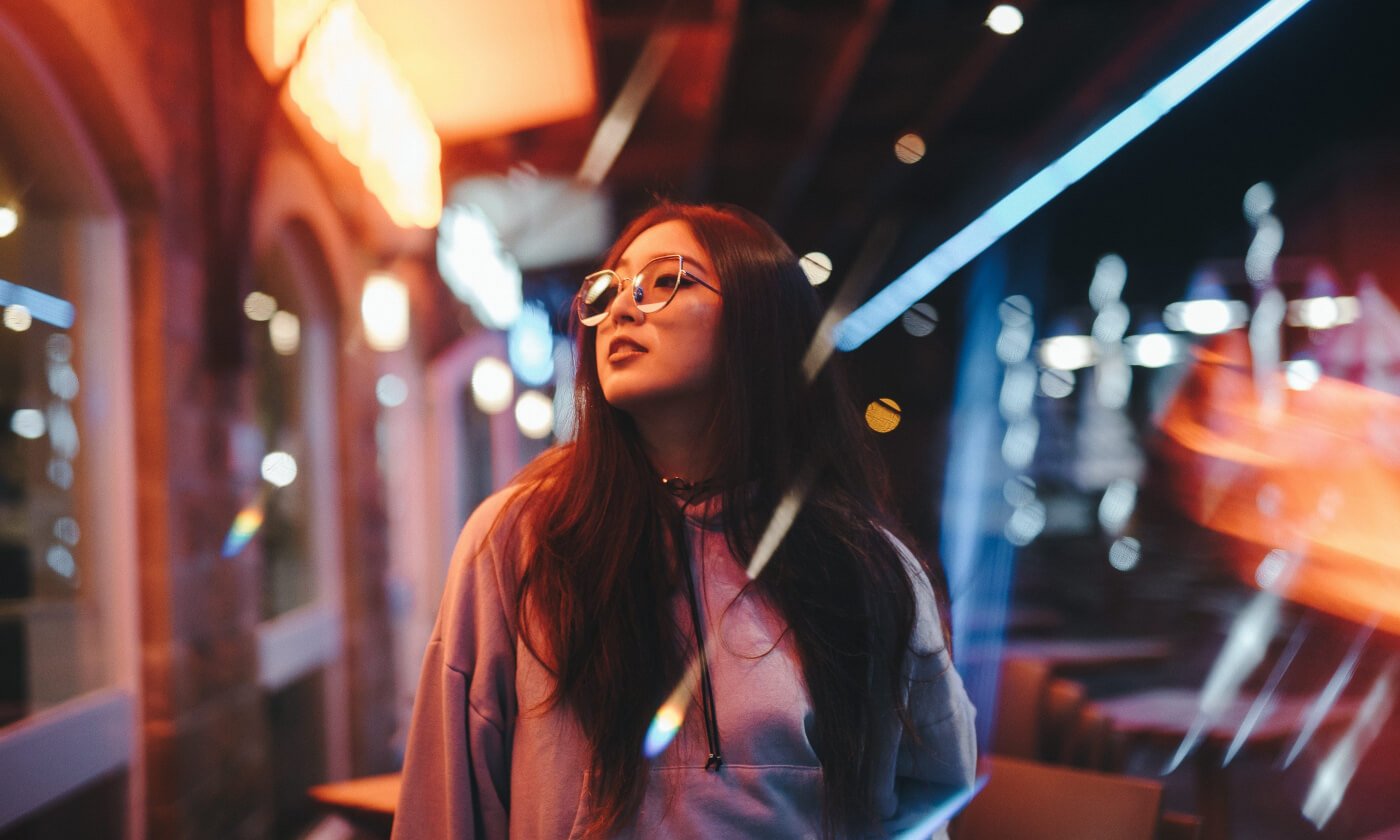
Award-Winning App ‘djay’ Hits the Meta Horizon Store
- By Smart Glasses Meta Quest
- 0 Comments
- Posted on
The award-winning app djay has racked up over 70 million downloads across desktop, mobile, and Apple Vision Pro headsets. And now, the dev team at Algoriddim is launching a newly reimagined version for Meta Quest to get even more people into the mix.
With interactive tutorials, djay is accessible for beginners while offering professionals advanced immersive tools to elevate their performances. The app has a library of over 5,000 free songs, plus access to over 100 million more via streaming services like Apple Music, TIDAL, SoundCloud, Beatport, and Beatsource. It’s got multi-channel low-latency audio, advanced USB MIDI support, and dynamic spatialized sound effects. You can connect your physical DJing equipment to your headset or learn to scratch on a virtual turntable.

Algoriddim took full advantage of our new audio capabilities and features, including enhanced USB device handling, support for more than two-channel playback, and—most notably—robust MIDI support that opens up new creative possibilities.
We sat down with Algoriddim CEO & Co-Founder Karim Morsy and Head of VR Stefan Hell to learn more.
To kick us off, tell us a little bit about yourselves: What’s your background? And how did you get your start in tech and/or entertainment?
Karim Morsy: I’m a musician at heart. What got me into tech is that, the way I wanted to express myself through music, I thought the tools weren’t quite the way I wanted them to be. I’ve always been a very creative person, so I wanted to build my own instruments and kind of mold things the way I wanted to see it as a performer. And I’ve been playing piano since I was four years old, and then when I was 12, I became a DJ and eventually started to DJ professionally in clubs and festivals.
Stefan Hell: I lead the technical development of everything related to XR at Algoriddim. I actually started in VR a long time ago. I started programming for the Oculus Dev Kit 2, I did a couple of games, so I’m coming a bit more from the games direction. But I also always enjoyed doing music, so for me, Algoriddim now is the perfect combination.
Awesome. And then Karim, you touch on this briefly, but what about DJing? How did you get into that originally, and how did you transition from just doing it for fun to doing it professionally?
KM: Even before I started DJing, I was always attracted to music. My parents had a grand piano, which I think they had more as a piece of furniture than anything else. When I was a little kid, I was really fascinated by how I could basically play with this thing and it would make sound. I became a professional pianist, but then when I became a teenager, the whole social aspect of music was more exciting for me, and I wanted to share the passion that I had for music with other people.
And at its core, DJing is about connecting people through music, and I really enjoyed doing that. That’s really what got me into DJing. Just being able to take existing music and recontextualize it, that was really fascinating to me, and performing on stage and sharing it with other people. And then of course, professionally, it’s a fun job to do. You only work on the weekend, and you’re getting paid for playing music, so it’s kind of a cool job.

And Stefan, do you have any sort of musical background? Or do you just come at it from the XR aspect and what it would mean to bring this experience to life in an immersive format?
SH: I’ve played in bands. I’ve played the piano, the guitar, the bass guitar. But I don’t have a background in DJing. That was a new world that I had to learn, and it was very interesting. And sometimes it also helps because I’ll make a rookie mistake that otherwise might have gone unnoticed.
Let’s talk about the app djay. What was the original inspiration behind it, and how, if at all, has it evolved over time?
KM: My original inspiration to get into DJing was that I wanted to share my passion for music with other people. I’d have friends come over to my place, and they were always fascinated by my turntable setup. It was always kind of intimidating to them, but when I showed them how to touch the vinyl, they were like, “Wow, this is so cool. I can touch music and play with it.”

So that’s how the idea sort of started developing, that we can make DJing something like cooking that anyone can have access to—just like anyone can cook a meal without being a chef, right? And everyone always has a gathering with people, and they play music in the background, so it’s a very fundamentally social thing. We really wanted to build a tool that empowers anyone to become a DJ, which at its core is interacting with music and playing music in interesting ways.
That’s really how the whole idea came to life. And I think combining my background as a professional DJ with the other co-founders who, at the time, were complete beginners and had no experience whatsoever, and this was also for the app we built for the Quest. I think it was very helpful, like Stefan said that he’s a rookie when it comes to DJing, and to us, it’s very important that something is always accessible to consumers but still appealing to a professional. I could put on my Quest headset and perform on stage while Stefan has fun DJing in his bedroom and dreaming about becoming a DJ.
I know djay has won a couple of Apple Design Awards—I see one on the wall behind you. What would you attribute the app’s critical success to?
KM: I think that it’s this duality that I mentioned. It’s like high-end professional quality—it’s like a Steinway piano. And in fact, the piano is something that’s always inspired us because it’s something that a five-year-old can use. It’s the same interface that a concert pianist will use, and it’s very reliable. So this has been our inspiration to build something that’s very, very reliable, very high-end in terms of quality, but then it’s also accessible. We had very high standards in terms of design, and it delights users—not only from looking at it, but design, it’s obviously much more than just what you see. It’s how you interact with something, how something feels, and I think basically ticking all of these boxes and driving innovation and kind of leading the way from mobile to desktop and then ultimately mixed reality—just setting a new standard, I think that that’s really what got us the awards.
I’m also curious how you navigated the licensing of such a massive library of tracks?
KM: When we started, back in 2004 or 2005, like 20 years ago, this was long before streaming was even a thing. People were still getting used to downloading songs. But the dream we always had, sort of the moon-shot feature is an infinite array of music. Just like a chef. Imagine, as a chef, that you had infinite ingredients to eat or put in your meal. The holy grail for DJs to have access to any song. As a DJ, you always get requests, but maybe you don’t have that song or you didn’t bring that album. Having access to any song basically gives you access to any type of crowd, whether they’re into hip hop or techno or what have you.
So from the very beginning, this was very clear to us—if we could ever pull that off—it’s something that the analog world really couldn’t offer. We’ve always been very close with streaming services and the music industry. It’s something that we started building over a decade ago, and I would say it’s the sustained effort and focus on just understanding that, at the end of the day, our tool is only as good as the content you can access.
Especially in VR, or XR for that matter, I think it’s even more important because you put on the headset and it’s not so easy to just import files. You expect things to be much more natural and frictionless. So we’ve really doubled down on those integrations to make sure that it’s a great experience. And not only with partners. We’ve also built our own catalog, so people have a very seamless login-free experience. Because even with the streaming services, you still need to have an account to log in, and we wanted to make that even more frictionless by having our own catalog where we work with some of the top labels in electronic music—basically, DJ-friendly music—to give people something right out of the box.
And then, out of djay’s the immersive environments, which one’s your favorite and why?
KM: That’s a really good question because we worked on these for a long time to really refine them. I like all of them, but if I had to pick my favorite, I would say it’s the club with the people dancing because it just brings back so many memories, and it feels so real—and that’s really what excited us to build for Meta Quest.
Ultimately, we took something from the 3D world and brought it to phones and tablets and computers on a flat surface. But this is going full circle, like, not only having the hyper-realistic turntables the same way I had them in my dorm room—like the whole experiential part beyond the functional part of Djing: what it feels to see the smoke coming out and people dancing and sensations and light shows that react to the music that you play. That part is something we couldn’t have achieved on any of the other more traditional platforms.
Yeah, definitely. And Stefan, how about you? What’s your favorite?
SH: Good question. I like mixed reality just because it’s so easy to use. But if I had to pick one of the virtual environments, it might be the volcano because there, I feel like you have the most connection to the intensity of the music. So if a song suddenly switches to a segment with very high intensity, you can see a volcanic eruption, and it sounds a bit wild, but when you’re in the headset, it’s a great experience just seeing the volcano react to the music.

Awesome. And again, you touched on this a little bit, but what motivated you to include mixed reality in addition to the fully immersive VR environments?
SH: Just because DJing, at its core, it’s a social experience. With mixed reality, you’re able to play in front of your friends to show them your mixes, to show them how you mix, and just be with other people while you’re DJing. And that, for us, is a big game changer.
Karim, anything to add to that?
KM: I think that’s perfectly said. It really is the core from a design perspective. We’re doubling down on mixed reality, but I also think that when you’re in the volcano, just going back into your room, zooming in and out between the worlds—it’s like when I was practicing in my bedroom as a teenager. I would sometimes just visualize myself in the club playing the songs, and then I’d have my mother knock on the door, and then you zoom back into reality. So it’s this switching back and forth between visualizing something, but then being back and not being distracted by your visualization. To us, MR is a very fundamental experience of the app.
Speaking of visualizations, how did you go about programming the audio reactive environments like the volcano and in the club? Just curious to learn a little bit more about that.
SH: We already have a lot of tools available just from all the experience we’ve developed. We have AI analysis tools to detect changes in intensity of the music. We detect the BPM, and we detect segment changes. What we noticed in those environments is that you expect them to react to the music, and that is a very empowering feeling because, as a DJ, you feel like you’re controlling the music and now this extends to the environment.
We started by doing static environments to get the right feel, but we really noticed that every environment needs to stay interesting for a long time. As soon as they react to the music, it changes with every song. That just makes it so much more interesting.

Were there any technical challenges that you ran into while optimizing for a mobile chipset? And if so, how did you overcome those obstacles?
SH: It definitely was challenging because we have quite a demanding audio engine, and now we mix that with virtual reality environments. It has to run at a stable frame rate at all times—that’s at the core. And obviously that was a challenging task, but I think on the Quest it worked really well. We didn’t have to make compromises on any of those fields.
And djay supports hand tracking on Quest—is that right?
KM: Yes. Our vision was always that whenever hand tracking became a thing, then we felt like it’s the right time for our app to blossom on the platform. And we always felt that that’s the most liberating thing.
And if you think about it, as humans, we’ve controlled music for centuries like that. If you look at conductors, they manipulate music with their hands in terms of the volume and the speed. That’s ultimately what a DJ does when you’re interacting with equipment. So it’s a very natural way to just use your hands freely to control the music, and it feels very empowering. It was a core part of the experience just like MR. It was a fundamental part of the whole experience.

I think that’s really where the magic happens because the DJing equipment is so intuitive and it tells you how to interact with the needle. It’s very clear. We don’t have to come up with special gestures or a dictionary of gestures that people don’t know. You just grab it, you pinch it, and then you drop the needle like that. And doing spatial effects in 3D, those are things you can’t even do on physical hardware. So rather than replicating the physical hardware that’s already there, we’re taking the best of both worlds and using the infinite canvas for the ultimate expression in terms of music manipulation.
And it works very seamlessly. We wanted to make sure that it’s a consistent experience. So people who feel comfortable using the Touch controllers, they can use the controllers. Just like you can go back and forth between MR and the fully immersive environments, if you want, you can drop your controllers and then you just immerse yourself using just your hands.
Coming back to our core philosophy, that’s sort of at the heart of how we design and build apps. We want things to be very accessible and seamless. Whether you use your hands or the controllers, everything is very natural and there’s no settings or switches. You just put away the controller and then you use your hands and that’s it.
That was going to be my next question: whether or not you could use controllers for those who, again, are more comfortable with that design scheme and who want the haptic feedback and that sort of thing.
KM: Right. And especially the ones who are already existing Quest users—they may be really experienced or comfortable with those controllers. It all comes down to accessibility, and we want to make sure that people can express themselves with whatever medium they prefer to do. And then professional DJs can connect to the physical hardware that they’re used to. So they have the same motor learning that they had, they can apply that, and then they have the headset as a display and a screen. So whether it’s hands, controllers, or physical DJ equipment, you can pretty much interact with the software in your preferred way.
Awesome. And then you mentioned that you’ve been at this for about 20 years now. I’m curious what lessons you’ve taken away from your time at Algoriddim so far.
KM: You could even argue it’s been 30 years, taking the time I’ve been behind the decks and playing in the club. I took a lot of things I learned there and brought them to djay—even now, when we were designing the virtual environments, I took a lot of the subtle experiences I gained DJing in front of a crowd, like how the crowd breathes and reacts sort of as a whole and tried to translate that paradigm into virtual worlds.
How do you translate a crowd building its intensity level to a volcano, for example. So there’s a certain mapping. But I learned that you’re never really done with an app. Whenever you feel you’re at the pinnacle, you kind of go back to the drawing board. I mean, 20 years ago, I don’t think we would have even dreamt of what we’re releasing today. You just put on a headset and then you have your 3D turntables, you can DJ in front of a crowd, you can DJ in a virtual world. So really the one thing we learned is just constantly pushing the boundaries and finding ways so it becomes more natural and more fun for people to interact with new music.

So what’s next for you—whether that’s future projects or things that are on the product roadmap for djay that you’re able to share? And if you can’t share anything, that’s okay, too.
KM: Sure. We always try to reveal once the stuff is ready, but I can definitely say that we’re really doubling down on MR and VR technologies, and I feel like we’re just at the beginning. It’s the same way we launched our mobile app: We were one of the very first on the App Store over 12 or 13 years ago, and we’re constantly improving and evolving the app. We feel like this is the beginning of a really long and exciting journey, and I think there’s a lot of things, especially when it comes to empowering use cases that were impossible before—like virtual crowds that I can DJ for a friend in South America and they could join the party—these are things that are genuinely only possible with VR and XR technologies. So that’s certainly something where we’re doing a lot of R&D and then seeing what we can pull off. We’re also expanding environments and just making it better, more exciting, and more intuitive. I don’t know, Stefan, if you have something to add without letting the cat out of the bag too much?
SH: One area that I also feel is really interesting is just learning and teaching. Already in the app on Quest, you can plug in real hardware, which is great. But now imagine you get a virtual coach to show you what to do and just being coached in 3D—I think that’s an amazing opportunity because right now, I usually tend to watch YouTube videos but it’s a flat screen. It somehow takes me out of the experience. So I think in terms of training, I see a lot of potential, and I’m really excited to dig deep with that.
I know we’re almost out of time, and we’ve covered a lot of ground, but I’m curious if there’s anything else that we didn’t touch on that you would like to share with our readers? Or, if there’s one thing that people take away from this blog post, what do you hope that would be?
KM: We hope that we can inspire a lot of people to unleash their inner DJ. We often hear, “Oh, I’m not a DJ,” but once they get the hang of it and they see how easy it is and how fun it is, it’s really just like playing with toys—but the toys are the music. So we think it’s a genuinely rewarding and almost therapeutic experience. It’s very relaxing to interact with music. We want to make that accessible to more people.
We worked closely with some of the world’s best DJs. For instance, Eskei83, the Red Bull 3Style DJ World Champion, had pre-release access to djay on Quest and already brought it to the stage for a live performance at Riverside Studios in Berlin on October 25. This was the first time a professional DJ performed with hardware powered exclusively by a VR headset, marking a significant milestone in the evolution of DJ technology. It shows that djay on Quest is not just a fun experience—it’s a groundbreaking tool that world-class artists can confidently use in live settings.
SH: I think that for me. It’s also really cool because when people see that, some might say that we just use the headset for some overlays, but in fact, it’s actually doing all the audio processing. It’s your device that you’re using, and you don’t need anything else besides the controllers, and I think that’s pretty cool.


